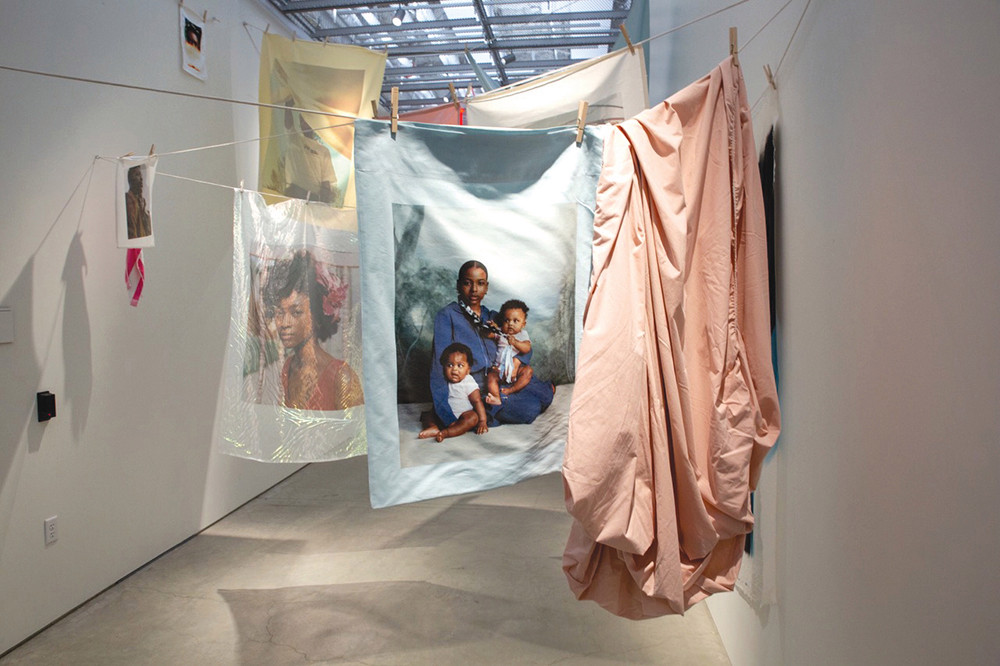[ad_1]
Born in 1995, Tyler Mitchell is a Gen Z phenom. Just a year after earning a bachelor’s degree in film and television from New York University, he made history by shooting Beyoncé for the September 2018 cover of Vogue—becoming the first black photographer to have his work grace the publication’s front. While growing up in Marietta, Georgia, a largely white suburb of Atlanta, Mitchell gravitated to alt-fashion magazines like i-D and Dazed. He was inspired by Ryan McGinley and Larry Clark’s stylized images of teen life, but says he really received his photography education from social media. At thirteen, he picked up a camera and amassed an early Tumblr following with his skateboarding videos. Using a palette that responds to the heightened reality of aspirational online content—cotton-candy pink, baby blue, sunny yellow—his portraits and short films conjure tender innocence. Importantly, Mitchell creates this fantasy for and with people of color, reimagining what freedom might look like for black youth.
On a study-abroad trip to Cuba after Mitchell’s sophomore year at NYU, a documentary photography instructor told him that his portraits of chic friends were a type of fashion imagery—a realization that piqued the young artist’s interest. His early work responds critically to the conventions of fashion ads. In the short film Wish This Was Real (2016), young, stylish black men play with water guns and plastic chains against bright seamless backgrounds—a poignant rejoinder to the death of twelve-year-old Tamir Rice, who was killed in 2014 by a police officer, while holding a toy weapon. The playful scenes are cut between an unsettling sequence showing one actor lying with plastic wrap over his face, hinting at the danger that black men face even in ordinary jest. In 2016, Mitchell cemented his fashion ascent with a commission for Dazed that depicted a vision of black utopia: models pose in magic-hour light, sometimes with toys, sometimes casually embracing each other.
Mitchell’s first US museum exhibition, “I Can Make You Feel Good,” is on view at the International Center of Photography (ICP) through mid-May. Curated by Isolde Brielmaier, this expanded version of the show (which debuted at Amsterdam’s photography museum Foam) brings together video installations, life-size photographic prints, and a new work in fabric that pays homage to black domestic labor. Opposite the show’s entrance, the three-channel video Chasing Pink, Found Red (2019) tempers visual fantasy with an acrid dose of reality. Projected onto walls that form a triangle, the work shows lush images of picnicking black youths. Offscreen, various individuals describe racial microaggressions. “Feeling obligated to control people’s perception of you is an everyday black experience,” says one voice. Mitchell crowdsourced the stories from his social media accounts, receiving voice memos from followers located around the world: from Nigeria to the Caribbean.

The installation Laundry Line (2020), which debuted at ICP, takes its inspiration in part from African American photographer Gordon Parks’s image of two Alabama women at a wire fence loaded with clothes, part of the full-color series “A Segregation Story” (1956). Mitchell’s Laundry Line includes portraits of models, influencers, and friends printed using dye-sublimation processes onto a variety of textiles: blue terrycloth, a vintage floral Pierre Cardin scarf, and diaphanous materials that recall crinkly plastic. Mitchell’s engagement with Parks’s diverse oeuvre is ongoing; he is currently working on a commission based on the late artist’s fashion photography for the Parks Foundation in Pleasantville, New York, where it will be on view this fall.
This article appears under the title “First Look: Tyler Mitchell” in the March 2020 issue, p. 14.
[ad_2]
Source link

